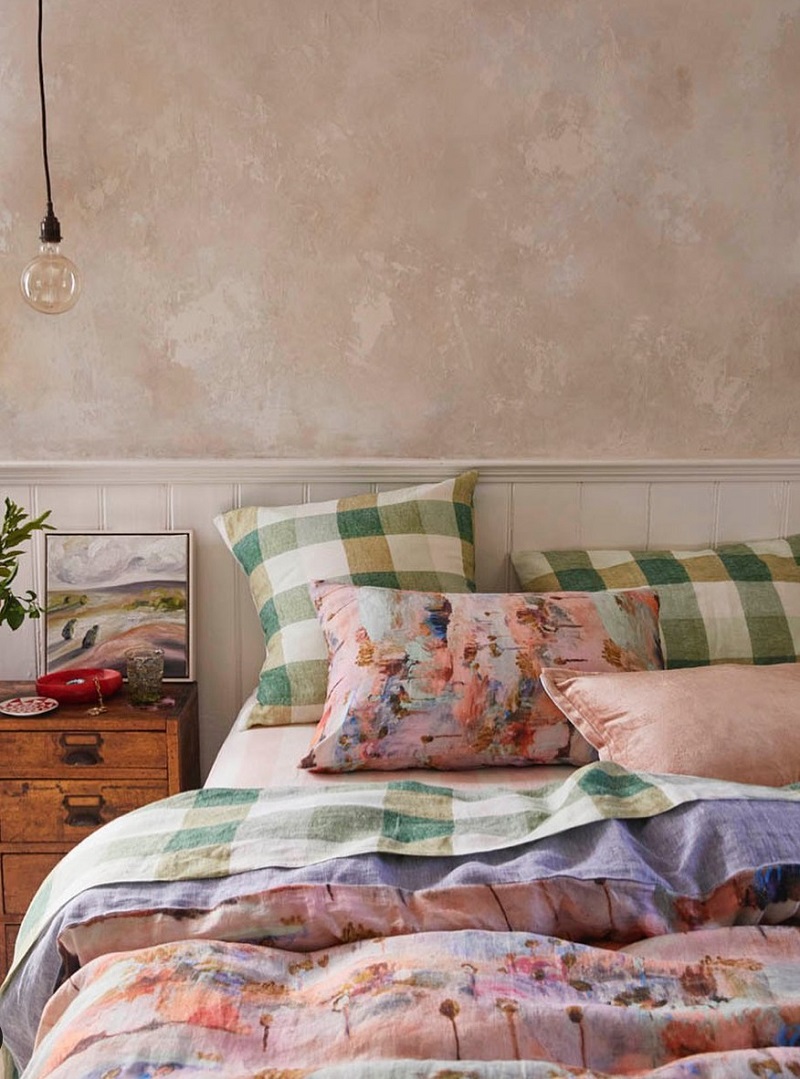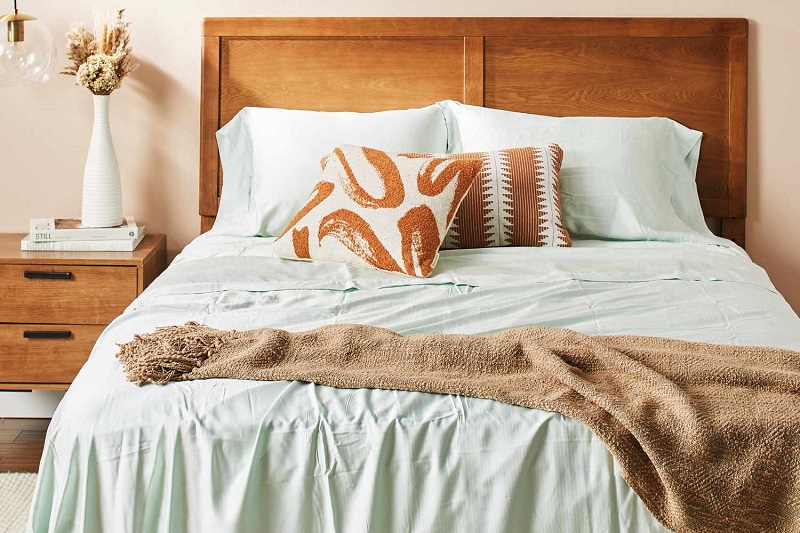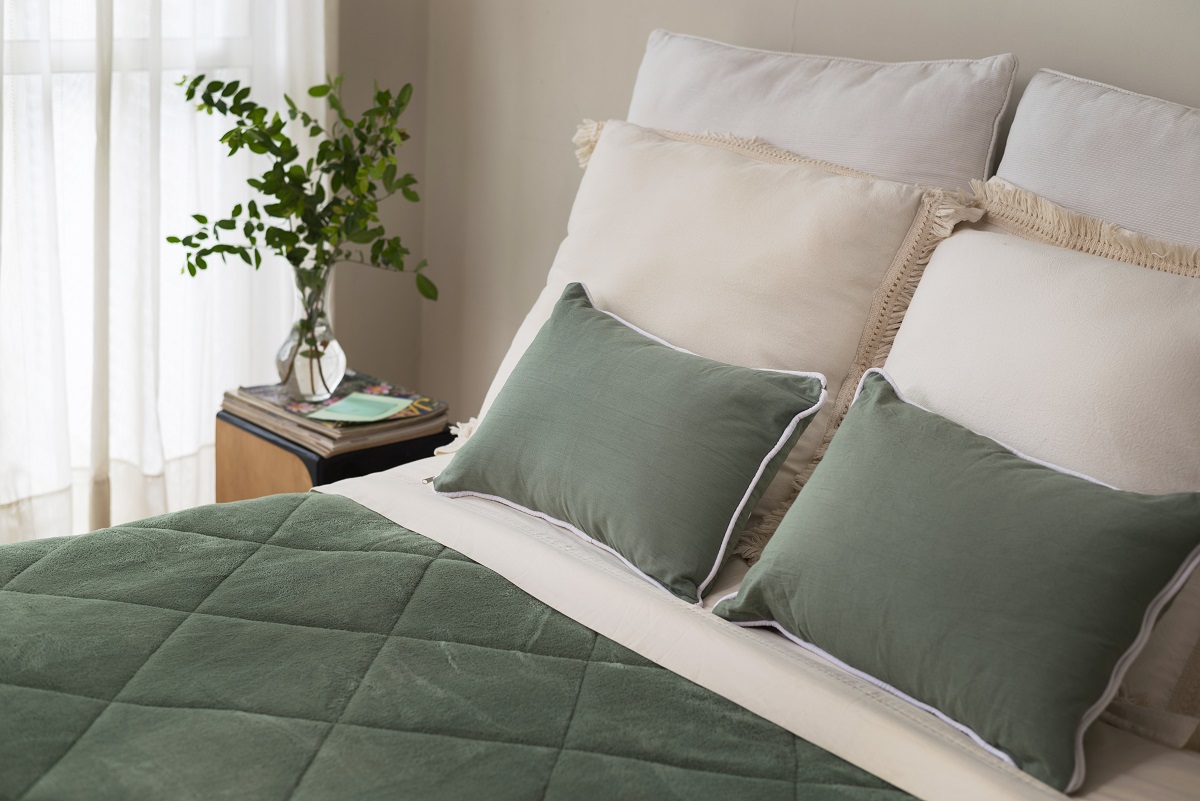Most people spend a lot of time finding the right pillows, considering the right firmness, design and materials. But what about the pillowcases? It’s often overlooked, but it’s actually a very important part of your bedding. A good pillowcase can protect your skin and your pillow, ensuring it stays in good condition for longer. By choosing the right pillowcase, you’ll not only improve your sleep but also that of your loved ones. When you decide to buy pillowcases, it’s important to consider other things besides the colours and prints. The fabrics are essential; organic fabrics such as cotton or silk are great for your skin. It’ll make sleeping soft, gentle and breathable. Besides that, you need to consider the size and thread count as well. Here’s what you need to keep in mind.
Consider the Materials

When shopping for bedding, it’s essential to take into account the type of fabrics. The choice of materials not only impacts the durability of your pillowcase but also influences the level of comfort. Opting for fabrics that provide the utmost softness and coziness, ensuring long-lasting quality, is highly recommended.
Pillowcases come in various materials, just like sheets and quilt covers. You can choose from natural or synthetic options. Although polyester may feel soft initially, it’s because of the synthetic materials used to make it feel silky and smooth. However, these fabrics are not as durable and don’t allow air to circulate, which can be uncomfortable for your skin and pillow. Additionally, they require more maintenance.
Cotton and linen are the top picks as they are both breathable and luxurious, and they will maintain their quality for a long time. Plus, washing them is a breeze! Overall, these materials are incredibly versatile, so you can discover pillowcases with different weaves and styles (like jersey cotton) in our collection that will surely meet your requirements. If you want to buy pillowcases that will keep your face clean (free of breakouts and free of fine lines) and your hair silky smooth, go for silk. It’s more expensive, but it doesn’t only feel luxurious to the touch but also will keep you safe from skin allergies.
What About Size?
Since you likely already have a pillow that you love, you’ll want to find a pillowcase that fits it just right. This step may seem simple, but it can actually be quite tricky. In Australia, Europe, and the United States, there are typically four different pillow sizes to choose from. The standard pillow is rectangular and measures 48cm x 74cm, making it a good fit for twin, full, and queen beds. European beds require a square pillow that measures 65 x 65 cm. The queen pillow is similar to the standard size, but a bit longer at 54 x 80 cm. Finally, the king pillow is designed for king beds and measures 50 x 90 cm.
Make sure to measure your pillows. Many people go through life without realizing that they need a bigger pillowcase, especially if they use latex, memory foam, or Bambillo pillows. Even though these special pillows may have standard measurements, their unique shape calls for a larger pillowcase that fits well and allows for proper ventilation.
Thread Count
You’ve probably heard of “thread count” before, but let’s break down what that actually means. Thread count, or threads per inch (TPI), is a measurement that determines how fine or coarse a fabric is. It counts the number of threads in one square centimetre or inch of fabric, both horizontally and vertically. When you add up the number of threads in one square centimetre (both horizontally and vertically), you get the thread count.
Thread count is often used to measure the quality of the fabric, with higher numbers indicating better quality. For example, the “standard” cotton thread count is between 100 and 150, while higher-quality pillowcases start at around 180. A thread count of 200 or more is considered to be excellent quality fabric.
Closing Options
Pay attention to shams and closures, as they differ from pillowcase to pillowcase. While both cover pillows and protect their filling, shams have additional fabric around the edges and are finished on all four sides. They often open in the back and are commonly used for European or decorative pillows. Also, pillowcases offer easy access with an envelope or full opening on one side and no extra fabric. When choosing the right type for your bed, consider your sleep habits, pillow type, and maintenance routine. Be cautious in selecting the best model for your pillow arrangement.
The Finish

Make sure to consider the appearance of your pillowcase when choosing one. If the fabric is cheap, the stitching may be uneven and low-quality, causing it to lose its shape quickly. The production process and location are also important factors to consider.
Maintenance
After you’ve chosen your pillowcases, it’s essential to wash them before using them for the first time. To keep your pillowcases looking crisp and colourful, it’s best to wash whites and coloured ones separately in a gentle washing machine cycle (40 °C) with liquid detergent. When it comes to drying, you can either line-dry them or tumble dry on low. It’s not recommended to dry clean them. If you want, you can iron your new pillowcase, but make sure to use a cool iron or iron it on the reverse side.

Leave a comment